*This post contains affiliate links. As an Amazon Associate, I earn from qualifying purchases. This means when you make a purchase, I get a commission at no cost to you! Read more about my affiliates on my Affiliate Links Disclaimer.
I LOVE animals, especially mammals. My love for animals is what made me want to become a wildlife biologist. How did I develop such a passion?
From my yard! My parents took me exploring in our own front and backyard. I didn’t grow up in a rural area and we didn’t own a lot of land, but I had so much fun lifting up rocks and looking for little critters all over.
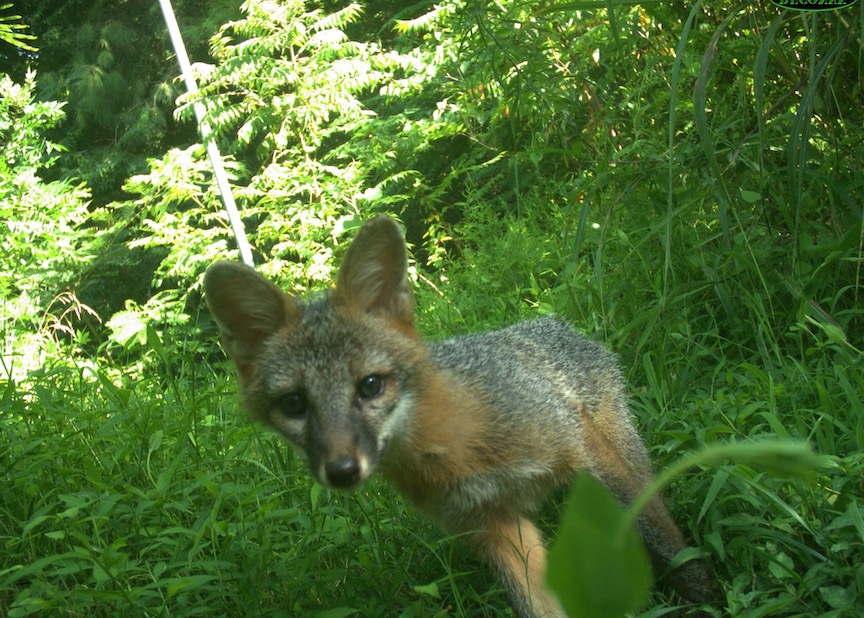
Mammals tend to be people’s favorite animals and they are definitely all around us. Our citizen science based camera trap research from surveying school yards worldwide and the suburbs of Raleigh and DC showed that mammal diversity and abundance is the same for mammals larger than a chipmunk across a wild-suburban gradient. Abundance even peaked in suburban areas. This means that there are mammals all around us.
Why Attract Backyard Mammals?
Help Them Out! Backyards are Now Part of Their Habit
With increased human development, mammals have less space to roam which has led to declines and even extirpations (locally extinct) and extinctions (wiped out completely from the planet). Larger mammals are especially vulnerable to habitat loss because given their larger size, they need larger spaces to roam, raise their young, and find mates.
Because of increased development, mammals now need to connect undeveloped parts of their range to create new home ranges. They maximize these “green spaces” and due to scarcity, they use our backyards as some of these spaces.
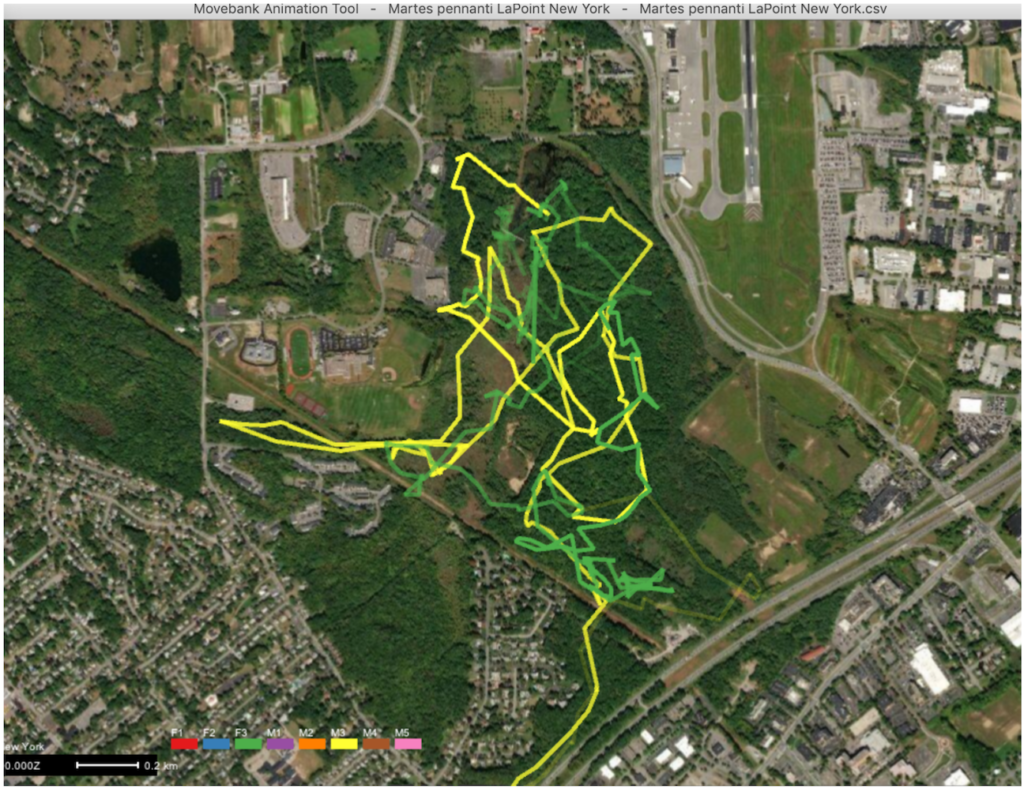
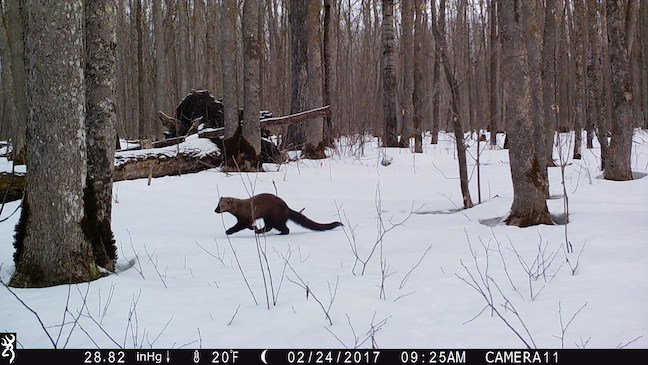
The good news is that some mammals are making a comeback, even those particularly vulnerable to human development like larger carnivores. Coyotes now live in downtown Chicago and New York City, leopards thrive in Mumbai, India, and pumas live in Los Angeles.
In the cities of Raleigh and Washington DC, we found that green spaces, even really small ones, are the main reason why mammals are thriving in suburbs. As long as we maintain small green spaces throughout developed areas, mammals like foxes, opossums, deer, raccoons, and coyotes can survive. Some mammals though, like bobcats need more help (at least in Raleigh and DC, there are urban bobcats in Texas).
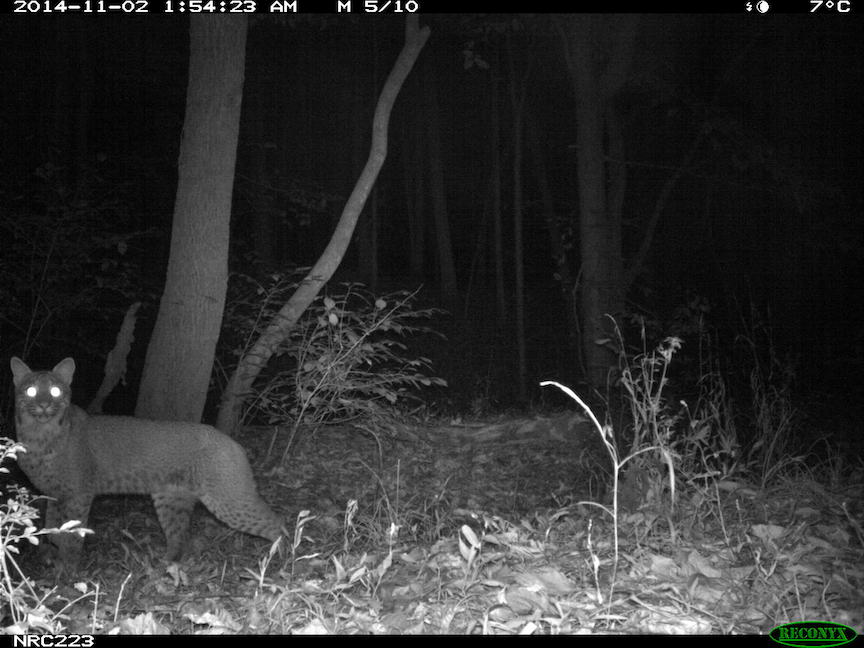
It’s important to remember that on the east coast of the United States, larger predators, like pumas and grey wolves, are now extirpated. This means that the mammals that now persist are ones that have already adapted to development. Around the world though, other mammals may not have developed such resiliency and are still greatly threatened by development.
Mammals Provide Ecosystem Services (Stuff Nature Does that Helps Us)
Mammals, like all of nature, provides ecosystem services (benefits) to human beings. For example, if we had no pollinators, we would have a severe shortage of food. Wetlands help mitigate flooding from hurricanes. Did you know that without bats we would not have margaritas? At least alcoholic ones as they pollinate the agave plants that are used to produce tequila.
Some benefits that mammals provide us is that they are seed dispersers. Some plant species are exclusively dispersed by mammals, and some even by a single species. For example, in central and west Africa, some plant species cannot grow without being eaten first by forest elephants (and then pooped out).
Seed dispersal has an enormous impact in mitigating climate change. Mammals help forests grow and forests absorb carbon.
Mammals also impact the climate by grazing, trampling, and pooping! This review of studies across many types of animals from small invertebrates to large mammals found that animals can increase or decrease rates of biogeochemical processes greatly, which impacts climate change.
Finally, mammals are all part of the circle of life. Maybe you don’t like rodents (you should!), but you do like birds. Small mammals are an important component of raptors’ (like owls, eagles, and hawks) diet. Lots of people don’t like bats (again they should, bats are awesome!), but bats in your backyard will eat thousands of insects each night.
Backyard Mammals are Fun!
I’m obviously biased, but it is so much fun to see mammals in your backyard! My desk overlooks my backyard and I am entertained by the squirrels, and the bunnies are so darn cute. When I walk my dogs, I’ve seen really cool animals: red and grey foxes, opossums, chipmunks, and deer (almost daily now).
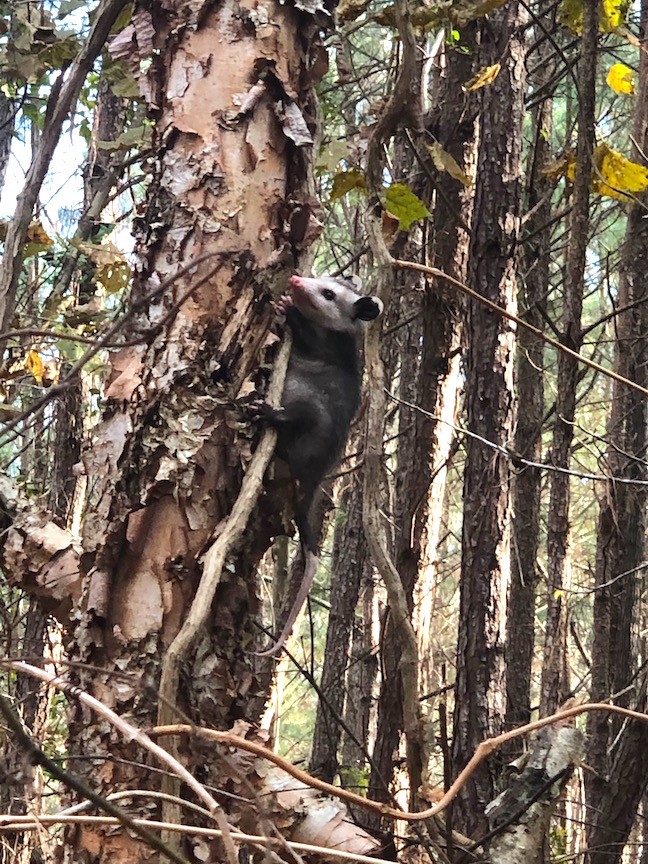
What Kinds of Backyard Mammals Can You Attract?
Wildlife varies greatly around the world, but the main groups of mammals will be the same. The examples I use here are largely from where I live and conduct research in North Carolina in the US.
Bats
When most people think of mammals, they think of large charismatic mega fauna like bears and elephants, but the bats and rodents actually make up most mammal species by far! Bats make up about 20% of all mammals.
I love bats and think they are so under-appreciated – or more accurately – not appreciated and even hated. Bats are honestly super cute up close and one of my favorite memories from home is seeing them come out to fly once dusk hits in the summer. You can also thank bats if you love margaritas.
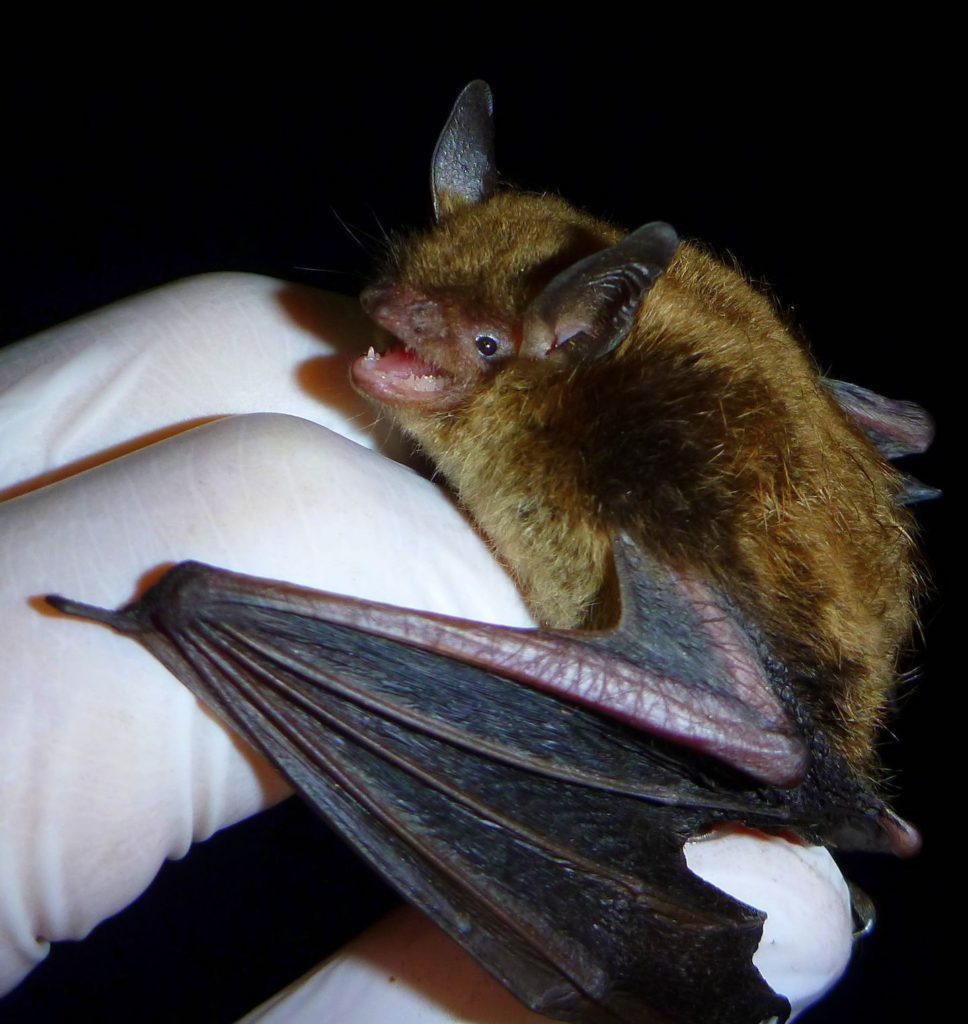
Bats are great to have in your yard because as mentioned before they eat so many insects! You will definitely want them around and I’ll soon have a post up showing you how to specifically attract bats to your backyard.
Bats in the United States especially need our help now as many species have suffered from massive declines due to a fungus called white nose syndrome, which is killing them.
For more on bats, check out my interview with bat biologist Lisa Gatens:
Powered by RedCircle
Small Mammals
Small backyard mammals consist of animals like shrews, moles, mice and rats. These guys are harder to see because a lot of their lives are spent underground or in the leaf litter. They are much harder to catch on camera trap unless you have one pointed towards a rock or a log.
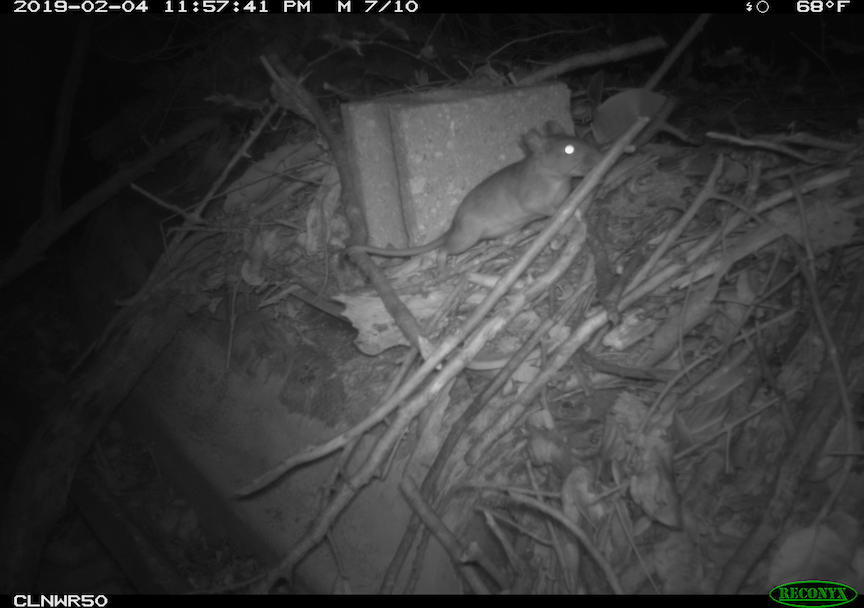
Like bats, lots of people don’t like small mammals and especially mice, rats, and moles. Mice and rats are thought of as pest species and moles create underground tunnels that a lot people think ruin their yards. When I lived in Missouri, many of my neighbors had these medieval-looking mole-killing traps. However, their mounds never bothered me – we got some in our yard. Why do our yards have to be so perfect looking?
Of course you don’t want small mammals to live in your house, but if you don’t feed wildlife, put pet food inside, and make sure your house is sealed, you should be good. If you do get them, you can use natural deterrents like clove oil.
Medium-Sized Herbivores
Medium herbivores that you are likely to get in your backyard include rabbits, squirrels, and woodchucks. If you live in the suburbs, pretty much everyone has these in their backyards, especially the first two.
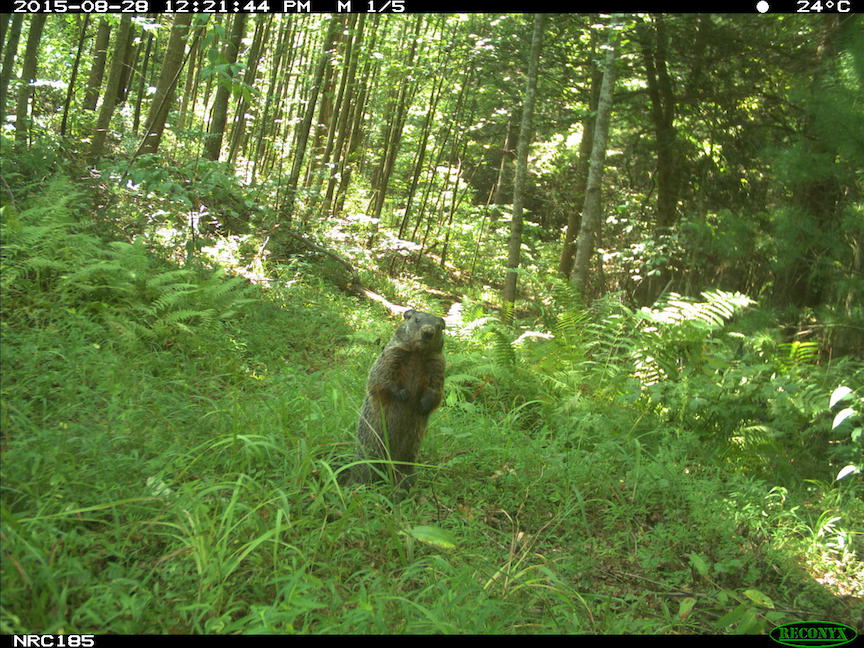
Medium-Sized Carnivores (Mesocarnivores)
Although a lot of these mammals technically eat both plants and animals, they are called mesocarnivores because they are in the Mammalian order Carnivora. Animals that you can find in this category include raccoons, skunks, foxes, and coyotes (although some people put coyotes in the large carnivore category because we don’t have large carnivores in the eastern United States anymore).
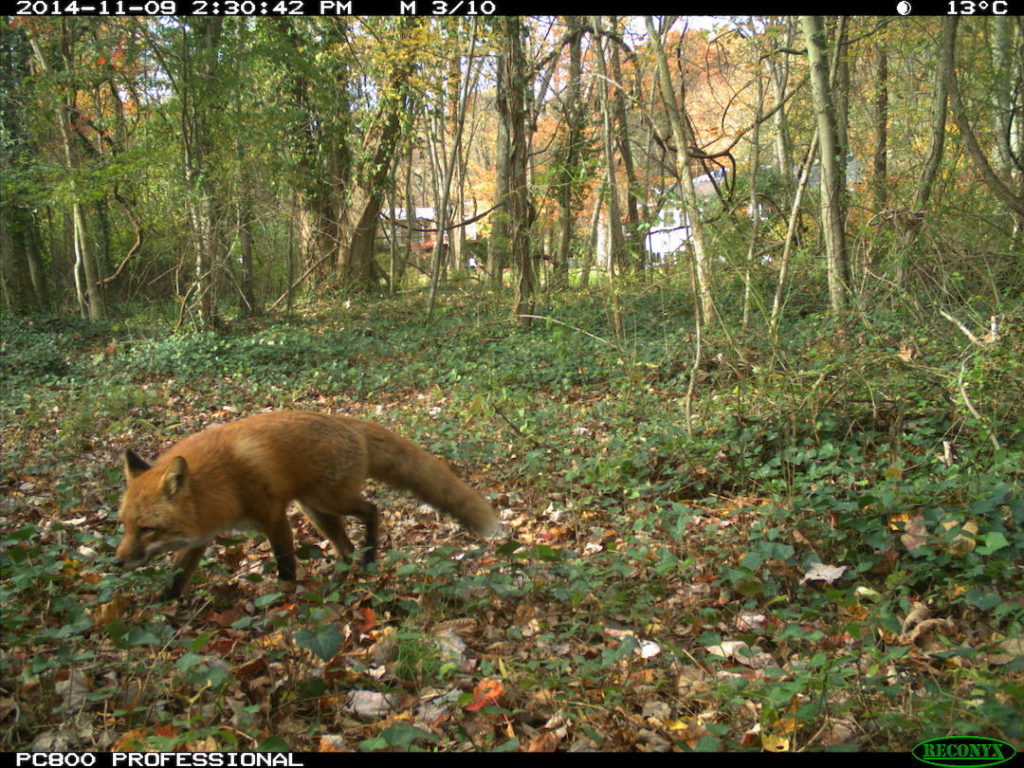
Mesocarnivores are actually pretty common in backyards, but most of these guys come out at night.
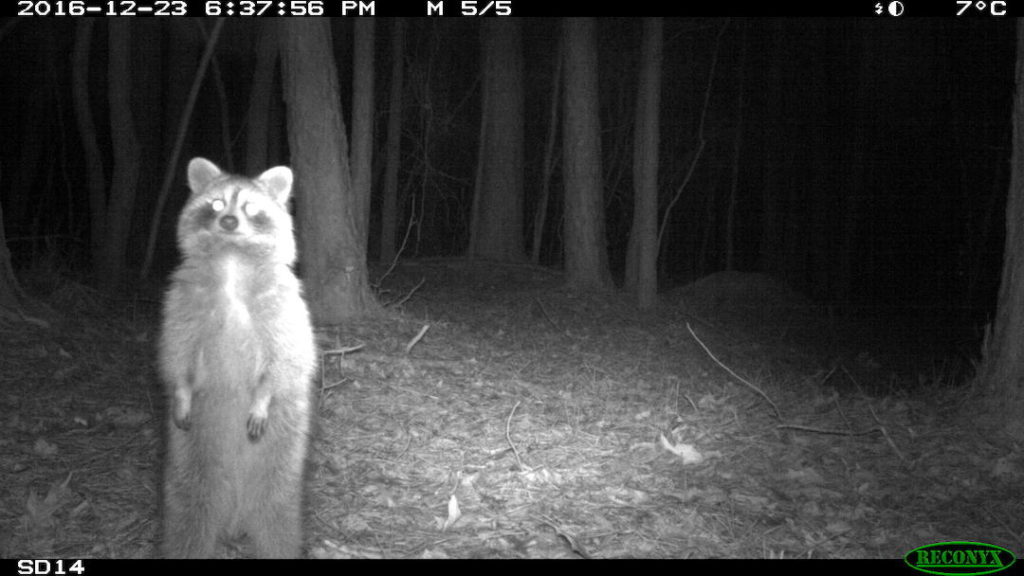
Large Herbivores
In the eastern US, one of the most common backyard mammals is also one of our largest herbivores: the white-tailed deer. In other parts of the US, you may get moose and elk, and at our schools in Kenya, we get a lot of large herbivore diversity, including African savanna elephants, the largest terrestrial animal.
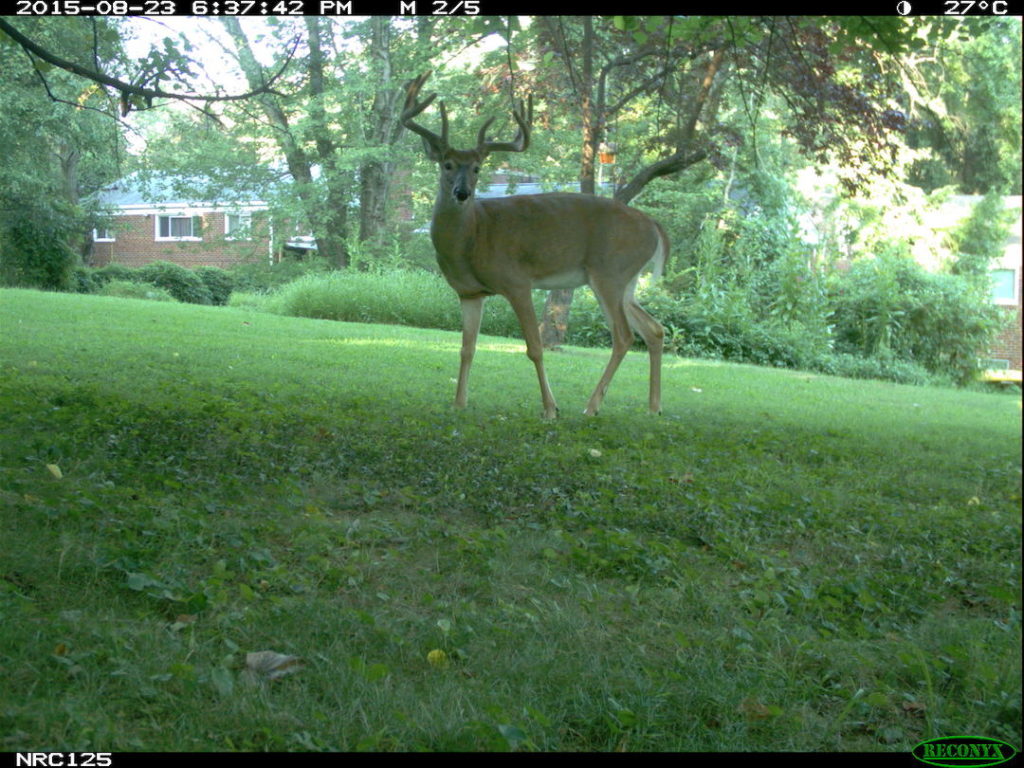
Large Carnivores
The largest carnivore we get here in North Carolina is the coyote or black bears. Although black bears are mostly vegetarians, they are in the order Carnivora.
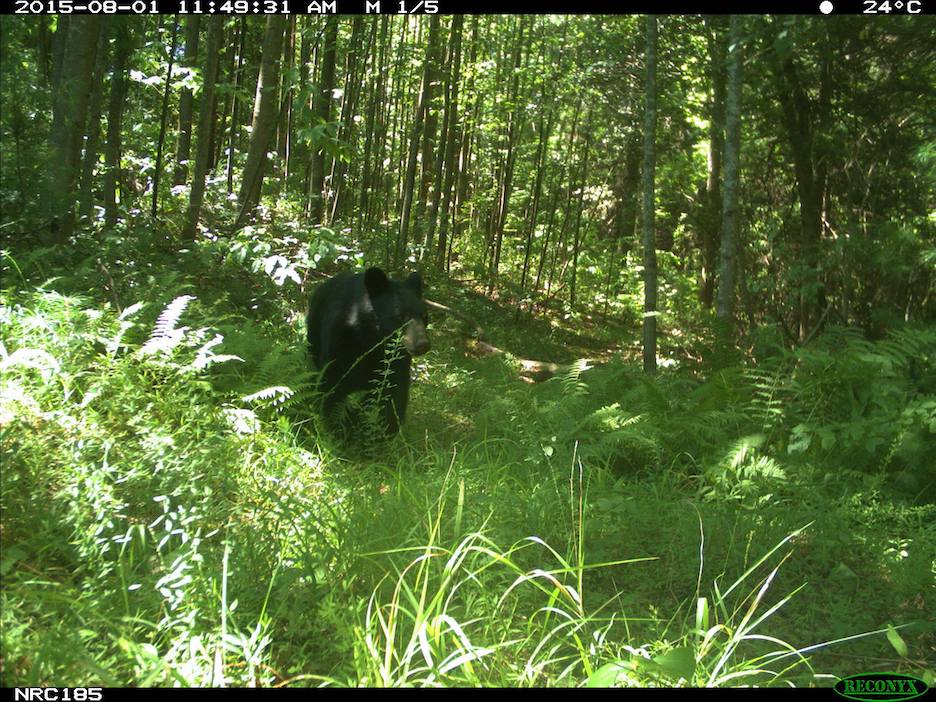
In the western United States though, you can definitely get pumas as one of your backyard mammals. Check out my friend’s video of a puma stalking a raccoon by the side of his house.
At some of our schools in India, students get tigers in their schoolyards!
5 Tips to Help Out Backyard Mammals
Now that we know the kinds of mammals we can get in our backyard, here’s what you can do to make sure they have a good home there.
1. DO NOT DIRECTLY FEED Backyard Mammals
This is the most important tip by far. While purposeful feeding will most certainly attract mammals, it will create problems for them that will quite literally threaten their lives. Mammals that are fed food become dependent on that food and can lose the ability or motivation to find their own food. If you move or have to stop feeding them for some other reason, then that animal might die.
This is especially true for bears. There is a phrase “a fed bear is a dead bear” because bears become reliant on this available food, so much so that they will go wildly out of their way to get it. They also lose their fear of people and become dangerous to the community and it’s not uncommon for them to be put down.
The dangers of feeding wildlife is not limited to bears. Coyotes have become increasingly bolder and scientist think this has to do with either people leaving food out directly for animals or indirectly by leaving pet food out. Keep both kinds of food indoors!
What About Feeding Birds via Bird Feeders?
Feeding birds can seem pretty harmless, but it could do more damage than good. Other animals (like bears) can feed at bird feeders and as mentioned above, this can make bears bolder and/or more aggressive, which can lead to their death.
But feeding birds can actually be bad for birds too!
What?!?!
Yes, bird feeders can spread disease! I received an email from my state agency about taking feeders down due to a Salmonella outbreak.
NC Wildlife Resources Commission
That’s only one of the disease that can be spread. So if you MUST have a feeder, make sure you clean it frequently. You can learn how by listening to ornithologist Lauren Pharr on the Bird Basics episode of my podcast.
Powered by RedCircle
Subscribe on iTunes, Spotify, or Stitcher.
2. Create Natural Opportunities for Food
The right way to make sure mammals have food is to create an environment that provides food for them naturally. This ultimately boils down to plants. Herbivores like deer, rabbits, and squirrels will directly eat plants or parts of plants.
For carnivores, you will have to think about food chains and webs. You want to think about the prey species and then think about creating good habitat for them. Animals like foxes will eat smaller mammals while coyotes may require more rabbits.
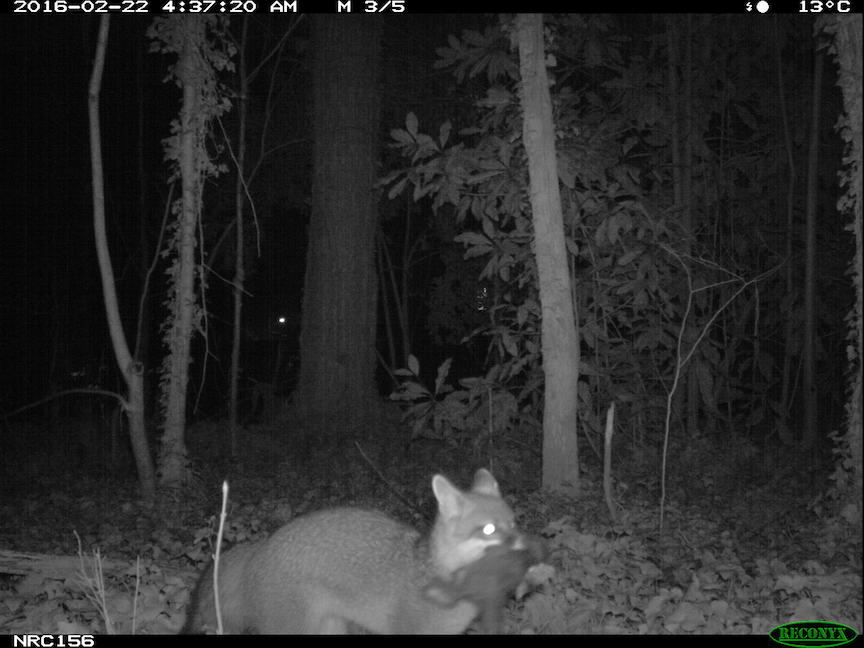
Focus on planting native species which will attract more native wildlife in general (especially insects and birds).
3. Allow for Natural Shelters for Backyard Mammals
Mammals need shelter for rest, to raise young, and help protect them against the elements. Brush piles and logs can provide shelter for small to medium-sized mammals. Lots of backyard mammals with make homes from dead trees. Mammals will really use anything that provides cover. Anything that provides more structure and dimension to your yard will help out mammals.
Lots of sibling frolicing with the recent nice weather. pic.twitter.com/Sbpjwitqlx
— Live Camera Traps (@camtraplive) May 2, 2019
Overall, don’t be so pristine about your yard! I let my backyard go completely (but I don’t have kids, just dogs, and it’s really shady for grass to grow). At my parent’s home though, they do have a lawn, but there are definitely parts that are left “wild.” Mowing your lawn less and blowing/raking leaves less or not at all is best for all kinds of wildlife.
4. Have a Water Source
Just like birds use bird baths, mammals will also drink and bathe in small water sources. You can put out bird bath tops on the ground so smaller mammals can reach it or you can even add a pond to your backyard.
5. Keep Your Cats Indoors
Domestic cats kill lots of wildlife and mostly just for fun. They get a bad rap for killing birds, but cats kill a lot of small mammals too.
Putting your cat outside is a risk to its own survival. Cats frequently get hit by cars, can get in fights with neighborhood cats (my roommate’s cat would come home with severe injuries), and can get eaten by other animals (coyotes and raptors). Just keep them indoors!

Mammals can be harder to see than other animals and many are nocturnal. The best way to look at mammals in your backyard is with a camera trap. I use camera traps in my research, but you can also use them for fun in your backyard and upload your photos to iNaturalist (you can follow me at my username stephschuttler).
I hope this post inspired you to make your backyard more friendly to mammals. Let me know know what backyard mammals you find! Tweet me a photo of write a comment below.

All camera trap photos are from the eMammal website and research projects.
Love this post? Share it with friends!


